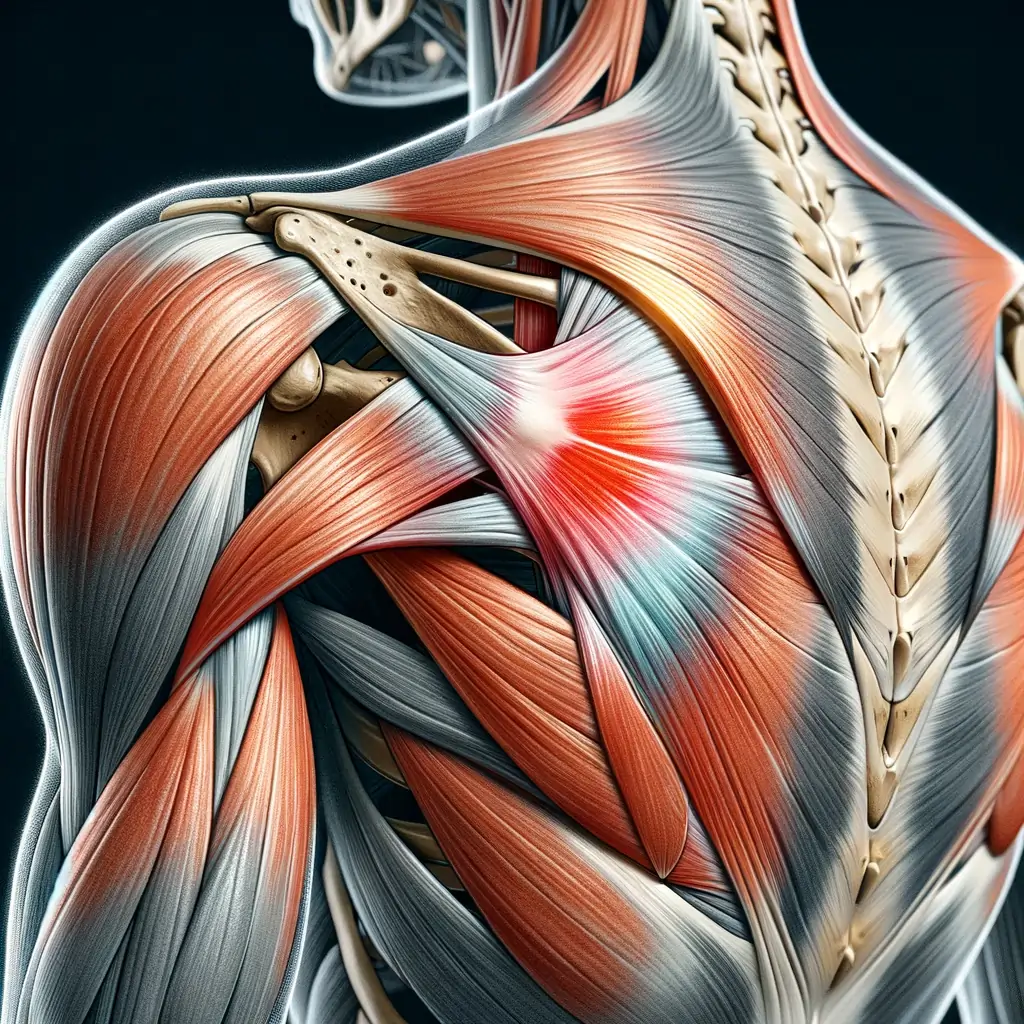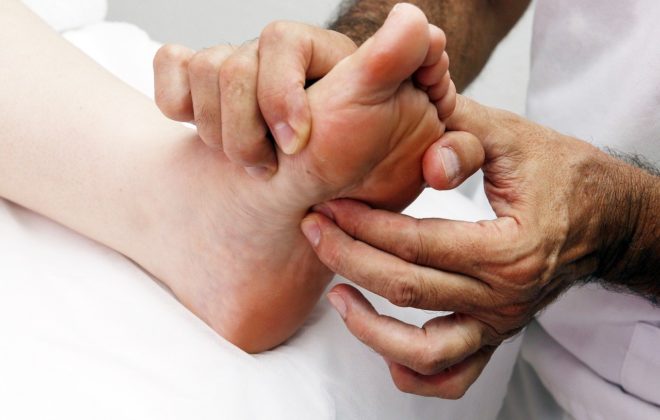Trigger Point Treatment | Best Ways To Resolve
If you’re feeling the nagging ache of muscle pain, used your hands to dig around the painful spot, chances are you’ve encountered a trigger point. These sensitive spots in your muscles can cause discomfort and even disrupt your day-to-day life.
But what exactly are these sensitive points, and how can you soothe them? Let’s dive into the world of trigger point treatment and uncover effective ways to bring relief.
Did you know that applying pressure to a tender “knot” in your muscle could help alleviate its pain? In this article, we will explore various strategies for tackling trigger point pain—right from at-home remedies like stretching and nutrition to professional treatments such as neuromuscular therapy and injections.
Together, we’ll find solutions that can help soften those tight spots and improve your range of motion. Ready to feel better? Keep reading!
Key Takeaways
- Trigger points are painful sensitive spots in the muscle that can cause local and referred pain; identifying and treating them can be very helpful for pain relief.
- At – home treatments like good posture, stretching, addressing muscle imbalances, nutrition, and lifestyle modifications can effectively manage trigger point discomfort.
- Professional treatments such as neuromuscular therapy, muscle energy techniques, and trigger point injections provide tailored approaches to alleviating myofascial pain syndrome.
- Maintaining balanced strength training helps prevent the formation of new trigger points by ensuring muscles work together harmoniously.
- Combining self – care measures with professional guidance can optimize recovery from chronic muscle tension associated with trigger points.
Understanding Trigger Points

Diving right into the heart of muscle discomfort, trigger points are those pesky, painful sensitive spots that form in muscles. They feel like small tough spots or bands under your skin and can cause pain both at the site and in more distant areas, known as referred pain.
Imagine a web where one point leads to sensations elsewhere; that’s what happens with myofascial trigger points—tenderness in one spot might bring on unexpected pain patterns elsewhere in your body.
Recognizing these sore spots is crucial because they’re often mistaken for other types of musculoskeletal pain. A unique aspect of trigger points is their ability to produce intense local discomfort away from the pressure spot.
This characteristic helps differentiate them from tender points associated with conditions like fibromyalgia, which don’t typically refer pain to other regions. If you press on an active trigger point, expect a sharp response and potentially a deep dull ache.
Understanding how to identify and manage these trigger points paves the way toward targeted treatment options such as dry needling, massage therapy, or even specific exercises designed to relieve the tension and alleviate the resulting discomfort effectively.
Causes of Trigger Point Pain

Now that you’re familiar with what trigger points are, let’s delve into why they cause discomfort. Stress and overuse of muscles often lead to the development of these painful points.
Your muscles can tighten from repetitive movements or sustained stress, forming sensitive areas known as trigger points. These spots become sources of aching due to the strain placed on muscle fibers.
Poor posture and imbalanced musculature also contribute significantly to the creation of trigger points. Slouching at your desk or cradling a phone between your shoulder and ear may seem harmless but can actually induce significant tension in your neck and shoulders, giving rise to myofascial pain syndrome.
Additionally, an injury or trauma to muscle tissue can disturb normal function, leading to chronic pain if not addressed properly through methods like physical therapy or specific treatment plans such as trigger point injection therapy for pain relief.
At-Home Treatments for Trigger Point Pain
Empower yourself with techniques to alleviate discomfort right in the comfort of your home, setting you on a path toward managing and reducing trigger point pain effectively—continue reading for practical strategies that can transform your approach to pain relief.
Lifestyle modification
Making changes to your daily habits can have a big impact on relieving pain from trigger points. Start by looking at the way you sit, stand, walk, and sleep. Good posture is crucial—it minimizes stress on your muscles and joints and helps keep trigger points from forming or getting worse.
Consider using ergonomic furniture that supports your body correctly if you spend a lot of time sitting down for work or leisure.
Engaging in regular physical activity strengthens muscles, increases flexibility, and reduces the chances of muscle tension pain. Aim to mix cardiovascular exercises with strength training and stretching routines to maintain a balanced physique and prevent new trigger points from developing.
Also take moments throughout your day to move around if you’re usually stationary; short walks or gentle stretches can make a difference. Modify your diet too—eating anti-inflammatory foods like fruits, vegetables, whole grains, and lean proteins may reduce chronic inflammation associated with myofascial pain syndromes.
Remember that these lifestyle adjustments not only help manage existing discomfort but also contribute significantly to long-term pain management.
Posture training
Your posture has a significant impact on trigger point pain, especially if you’re dealing with back pain or neck pain. Proper posture training can help align your body correctly, reducing the strain and tension that contribute to trigger points.
Work on keeping your shoulders back and down, aligning your head with your spine, and avoiding slouching or leaning forward for long periods. These adjustments in how you sit, stand, and move can relieve pain associated with poor posture that often exacerbates trigger point issues.
Implementing regular breaks into your daily routine is another aspect of posture training. If you’re sitting at a desk all day, make it a habit to stand up every hour to stretch and change positions.
This practice helps prevent muscles from locking into painful positions which can form new trigger points or aggravate existing ones. Now let’s look at how stretching itself plays an important role as an at-home treatment for relieving the intensity of myofascial discomfort caused by these hyperirritable spots in the fascia surrounding skeletal muscle.
Stretching
Stretching plays a crucial role in managing trigger point pain, helping to reduce the discomfort and increase muscle flexibility. Consistent stretching exercises can improve blood flow to your muscles and aid in the healing process of trigger points.
It’s important to stretch gently, focusing on the areas where you feel tenderness or tightness. Proper technique ensures that you don’t overextend and cause more harm than good.
Incorporate slow, controlled stretches into your daily routine to help relieve the tension associated with trigger points. Keep each stretch for about 30 seconds, avoiding any sudden movements that could aggravate sensitive spots.
As muscles begin to relax through regular stretching, you’re likely to experience some relief from persistent pain and stiffness. Building a habit of stretching not only addresses current discomfort but also makes future issues less likely by promoting muscular health and resilience against injury.
Moving forward, addressing muscle imbalances is another key strategy for long-term management of myofascial pain syndrome..
Addressing muscle imbalances
After you’ve incorporated stretching into your routine to ease trigger point pain, the next step is tackling muscle imbalances and asymmetry that may contribute to your discomfort. Strengthening exercises can effectively target weaker muscles and prevent them from being overpowered by stronger ones, which often leads to trigger points.
By focusing on balanced strength training, you ensure each muscle group works together harmoniously, reducing the risk of knots forming.
Incorporate a mix of exercises that promote symmetry within your body. For instance, if you have trigger points in your back due to a dominant chest muscle group, integrate back-strengthening workouts into your regimen.
This approach not only helps relieve pain but also improves overall function and posture—essential elements for long-term muscular health. Remember to progress gradually with these exercises and consider seeking guidance from a physical therapist or certified trainer who understands the intricacies of treating trigger points through balanced fitness plans.
Nutrition
Addressing muscle imbalances is a key step, and so is choosing the right foods to support your body’s recovery. Eating for trigger point therapy means focusing on meals rich in protein, vitamins, and minerals that aid muscle repair and reduce inflammation.
Include omega-3 fatty acids from sources like fish or flaxseeds to help ease muscle tension. Stay hydrated with plenty of water; it keeps muscles supple and helps flush out toxins that may contribute to pain.
Load up on fruits, vegetables, and whole grains which are packed with antioxidants that combat free radicals – these can lead to increased pain if left unchecked. Consider supplements such as magnesium or vitamin B12 if you’re not getting enough from your diet alone; they play crucial roles in nerve function and muscular health.
Make smart nutritional choices part of your comprehensive plan to relieve pain caused by trigger points.
Professional Treatment Options for Trigger Points
For those seeking more advanced intervention, professional treatment options for trigger points offer tailored approaches to effectively alleviate your pain and improve muscle function.
Neuromuscular therapy
Neuromuscular therapy targets your muscles and soft tissues to alleviate chronic pain. It’s a thorough approach that focuses on locating and treating your trigger points which often contributes to the patient’s pain discomfort.
This specialized form of massage applies alternating levels of concentrated pressure on areas where you feel intense pain or have muscle knots. By doing so, it helps inactivate trigger points that could be causing referred pain and other issues throughout the body.
The treatment may include rhythmic stretching, deep tactile pressure, and specific movements tailored to each individual’s needs. Neuromuscular therapy not only aims to relieve the pain but also tackles underlying muscular imbalances that might contribute to long-term discomfort.
It can be particularly beneficial for conditions like back stiffness, headaches associated with myofascial tension or even temporomandibular joint pain. With skilled hands working on your muscles, this technique works towards improving circulation, reducing inflammation, enhancing flexibility and promoting overall healing within affected tissue regions.
Muscle energy techniques
Muscle energy techniques are hands-on treatments that target stiffness and discomfort in your muscles. Picture it as an active form of stretching, but with a twist – you actively use your muscles during the treatment.
Your therapist guides you to tense certain muscles for a few seconds against a counterforce they provide, which is usually their own strength. This helps reset muscle tone and improve flexibility.
After relaxing the tensed muscle, your body allows for a deeper stretch. Think of this as pressing the reset button on those areas where the knots and tension won’t go away. Repeating these steps several times can make significant strides in managing pain from trigger points affecting how you move every day.
These techniques may also enhance blood flow to targeted areas, promoting faster healing so that painful spots become less of a problem over time. Now let’s explore one more option: Trigger point injections offer another approach when persistent pain needs direct intervention.
Trigger point injections
Trigger point injections offer a direct approach to alleviate the discomfort of painful muscle knots. During this procedure, your healthcare provider inserts a needle into the trigger point containing either a steroid or anesthetic medication.
This targeted treatment can provide immediate relief from myofascial pain syndrome and is especially useful for individuals who suffer from chronic muscle tension that doesn’t respond well to other treatments.
If you’re considering trigger point injections as part of your pain management strategy, it’s essential to discuss with your doctor whether they are right for you. While many find significant pain reduction following these injections, it’s important to consider potential side effects and ensure proper diagnosis and treatment by experienced professionals.
The process aims not only to relieve local pain but also referred pain patterns which may affect other areas of the body.
Conclusion
You have the power to tackle trigger point pain, with many strategies right at your fingertips. Whether you opt for self-care methods or seek help from professionals, a range of effective treatments awaits.
Remember, patience and consistency are key as these stubborn knots often take time to soften and heal. Keep exploring options until you find what works best for your body. Embrace the journey toward relief and imagine the comfort that lies ahead once those painful points become a thing of the past.
Sam Visnic
Most Popular Posts
Categories
- Deep Gluteal Pain Syndrome (8)
- Deltoids (2)
- Foam Rolling (2)
- Glutes (9)
- Hamstrings (5)
- Hypnosis for Pain (3)
- Lats (2)
- Levator Scapulae (4)
- Lifestyle (8)
- Massage Therapy (39)
- Mobility (21)
- Movement and Exercise (19)
- Muscles (22)
- Nutrition (2)
- Obliques (1)
- Pain (25)
- Pectorals (3)
- Piriformis (3)
- Plantar Fasciitis (11)
- Psoas (11)
- Quadratus Lumborum (3)
- Quadriceps (2)
- Rhomboids (3)
- Sciatica (1)
- Serratus Anterior (1)
- SI Joint (14)
- Sternocleidomastoid (1)
- Stretching (18)
- Subscapularis (1)
- TMJ (2)
- Trapezius (1)
- Uncategorized (12)









